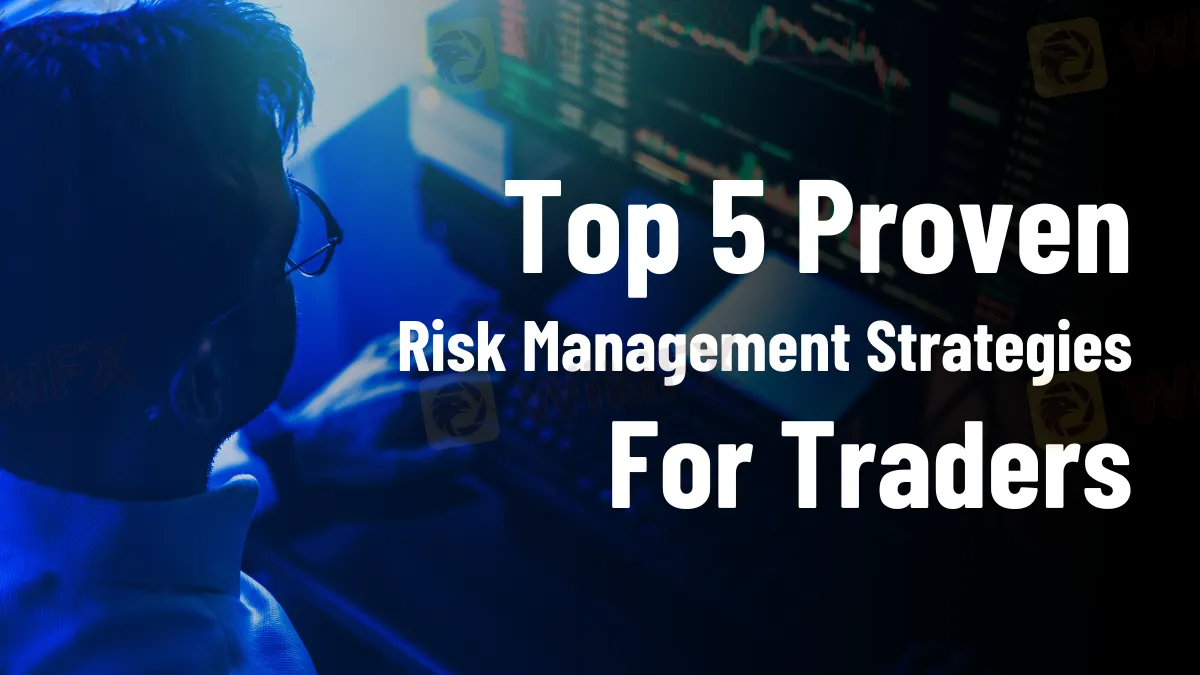简体中文
繁體中文
English
Pусский
日本語
ภาษาไทย
Tiếng Việt
Bahasa Indonesia
Español
हिन्दी
Filippiiniläinen
Français
Deutsch
Português
Türkçe
한국어
العربية
Top 5 Proven Risk Management Strategies for Traders
Abstract:Learn the top 5 risk management strategies to minimize losses and maximize returns in trading. Essential tips for consistent and sustainable trading success.

Trading in the financial markets has certain dangers. Economic upheavals, natural calamities, and political instability all have an impact on the continual variations in asset values. These characteristics make trading both tough and profitable, but traders may rapidly lose considerable amounts of money without effective risk management. This is why everybody involved in trading must understand and use appropriate risk management measures.
Why Is Trading Risk Management Important?
Risk management is essential for effective trading. Without it, even the most experienced traders might suffer unanticipated losses that could have been prevented. One of the most important reasons for risk management is that it allows traders to reduce their potential losses. For example, by limiting their risk to no more than 2% of their entire capital on a single deal, traders may ensure that even a failed trade does not significantly affect their overall capital.
Furthermore, consistent risk management results in greater trading consistency. Not every investment in the trading industry performs well all of the time. However, by efficiently managing risk, traders may guarantee that a drop in one investment is offset by the performance of others, resulting in constant total returns.
Risk management is essential psychologically for traders to retain their calm. Trading can be emotionally exhausting, and without a sound risk management strategy, traders may be inclined to make rash judgments or engage in dangerous transactions motivated by emotions rather than logic. A well-structured risk management strategy, backed up by a defined risk-reward ratio, enables traders to remain calm and make sound judgments.
Finally, proper risk management guarantees that a trader's operations are long-term. Markets are turbulent, and without the right techniques in place, traders may find themselves unable to continue their trading operations in the long run. Traders may, however, weather market turbulence and continue trading with confidence by managing their risks.

5 Effective Risk Management Strategies
To handle the intricacies of the financial markets, professionals, a worldwide broker noted for its extensive educational tools and user-friendly trading interface, offer five crucial risk-management measures. These techniques are intended to assist traders in minimizing losses while increasing their chances of success.
1. Size of Trade
The first guideline of excellent risk management is to match trade sizes with the money in your account. This entails making deals in accordance with your capital. For example, if you have EUR 1,000 in your trading account, it would be foolish to place a EUR 5,000 leveraged transaction since this would expose you to the danger of a margin call. A more conservative method would be to utilize a portion of your account, such as EUR 1,500, for a transaction with a EUR 75 margin. This method gives you additional options for placing stop-loss orders and minimizing risk.
2. Orders for Stop Losses
A stop-loss order is an essential component of a trader's risk management armory. It closes your deal at a fixed price, reducing possible losses. For example, if you purchase a stock for $50 and place a stop-loss order at $45, your trade will be closed if the stock price falls to $45 or below. This not only reduces your risk but also provides a clear risk-reward ratio for each transaction, allowing you to manage your trading approach more precisely.
3. Order Limits
Limit orders are another useful risk management tool. The most frequent sort of limit order is a take-profit order, which enables traders to profitably cancel a deal when the price hits a certain level. For example, if you want to purchase a stock but feel the current price of $50 is too expensive, you may place a limit order to buy 100 shares if the price falls below $45. The order is automatically executed if the stock price goes below $45.00. This approach allows traders to purchase at the right price without continually watching the market, lowering the danger of making rash moves.
4. The Diversification
Diversification is an important risk management approach that entails spreading investments across many assets. The concept is that different assets will respond differently to market events, lowering the total risk of the portfolio. Diversification reduces the likelihood of substantial losses but also limits possible benefits. It's about establishing a balance between caution and calculated risk, similar to when you create stop-loss and limit orders.
5. Hedges
Hedging is a method for mitigating losses that involves adopting opposing or similar positions. Hedging may be classified into two types: direct and indirect. Direct hedging entails taking the opposing position in the same asset. For example, if you own a stock, you may short-sell the same number of shares to protect yourself against losses. Indirect hedging, on the other hand, is acquiring a stake in a linked asset, such as a competitor's shares. Derivative hedging is also widespread due to the direct link between derivatives and their underlying assets.
Even the most successful traders suffer losses; it is an unavoidable aspect of the trading process. However, what differentiates successful traders from others is their ability to limit losses. Traders may traverse the complexity of the financial markets with better confidence and success if they meticulously prepare their deals and follow their risk management procedures.
Conclusion
To summarize, although risk is inherent in trading, risk management is critical to long-term success. Traders may reduce possible losses and improve their overall trading success by using these five proven strategies: proper trade size, stop-loss orders, limit orders, diversification, and hedging. Remember that the problem is not learning these tactics but continually using them every time you trade, keeping your emotions in control, and adhering to your well-planned strategy.
Enhance your trading skills by mastering these essential risk management strategies. Visit WikiFX's educational page for in-depth guides and expert tips to secure your trading success.

Disclaimer:
The views in this article only represent the author's personal views, and do not constitute investment advice on this platform. This platform does not guarantee the accuracy, completeness and timeliness of the information in the article, and will not be liable for any loss caused by the use of or reliance on the information in the article.
Read more

OctaFX Flagged by Malaysian Authorities
OctaFX has been officially listed on warning lists by both Bank Negara Malaysia (BNM) and the Securities Commission Malaysia (SC). These alerts raise serious concerns about the broker’s status and whether it is legally allowed to operate in Malaysia.

Errante Broker Review
Established in 2020, Errante has rapidly gained recognition in the forex and CFD trading industry. With a commitment to transparency, client protection, and a diverse range of trading services, Errante caters to both novice and experienced traders. This review provides an in-depth look at Errante's offerings, regulatory standing, trading conditions, and more.

IronFX Broker Review 2025: A Comprehensive Analysis of Trustworthiness and Performance
IronFX Review 2025: Explore the broker’s AAAA WikiFX rating, global regulations, and $500,000 trading prize. Is it trustworthy or a scam? Dive into our transparent analysis!

Why Your Worst Enemy in Trading Might Be You
Be Honest With Yourself: Are You Slowly Destroying Your Trading Account?
WikiFX Broker
Latest News
How much money will you earn by investing in Vantage Broker?
IronFX vs Exness Review 2025: Comprehensive Broker Comparison
Fraudsters Are Targeting Interactive Brokers' Users with Lookalike Emails
Interactive Brokers: Global Office Visits and Licensing Details
Top Tips to Choose the Best Forex Broker in 2025
SEBI Notifies New F&O Rules for Investors - New Derivative Trading Limits & More Amendments
U.S. Jobs Data Released: A Potential Boost for Gold Prices
SkyLine Guide 2025 Malaysia: 100 Esteemed Judges Successfully Assembled
Everything you need to know about ADSS
Vantage Markets Review 2025: Trusted Forex and CFD Trading Since 2009
Currency Calculator


